- Fire Emblem Wyvern Rider - June 23, 2022
- Fire Emblem Assassin - June 8, 2022
- Fire Emblem Wyvern Lord - June 8, 2022
Intro
“Hero, your Health is low. Do you have any potions? Or food?”
Ah sorry. Wrong Hero. Wrong game.
Fire Emblem’s Hero has been a staple physical infantry class throughout the series. Clad in armor and wielding Sword and Shield (Or Axe and Shield), the Hero often competes with the Swordmaster for the title of the best physical infantry unit. In numerous games, the two classes share promotion material, so there’s always a debate on who to promote first.
I’ve already covered Swordmasters here on FEFanatics, and now it’s time to cover Heroes to see if they’ve got what it takes to stand out amongst their rivals.
History of the Hero

The Hero debuted in Shadow Dragon & the Blade of Light as the Sword-locked promotion class for the Mercenary. The first Hero we see in the series is Astram, the love of Midia.
The Hero class gets somewhat confusing in Fire Emblem Gaiden. Instead of acting as the promotion for the Mercenary, the Hero is the exclusive promotion of the main character Alm. With this promotion, he gets access to Bows (Something that regular Heroes do not get). In Fire Emblem Gaiden, the Myrmidon serves as the promotion for the Mercenary. Heroes return in Mystery of the Emblem, functionally nearly identically to how they were in the first game. However, notable changeups came to the class in the Jugdral Series.
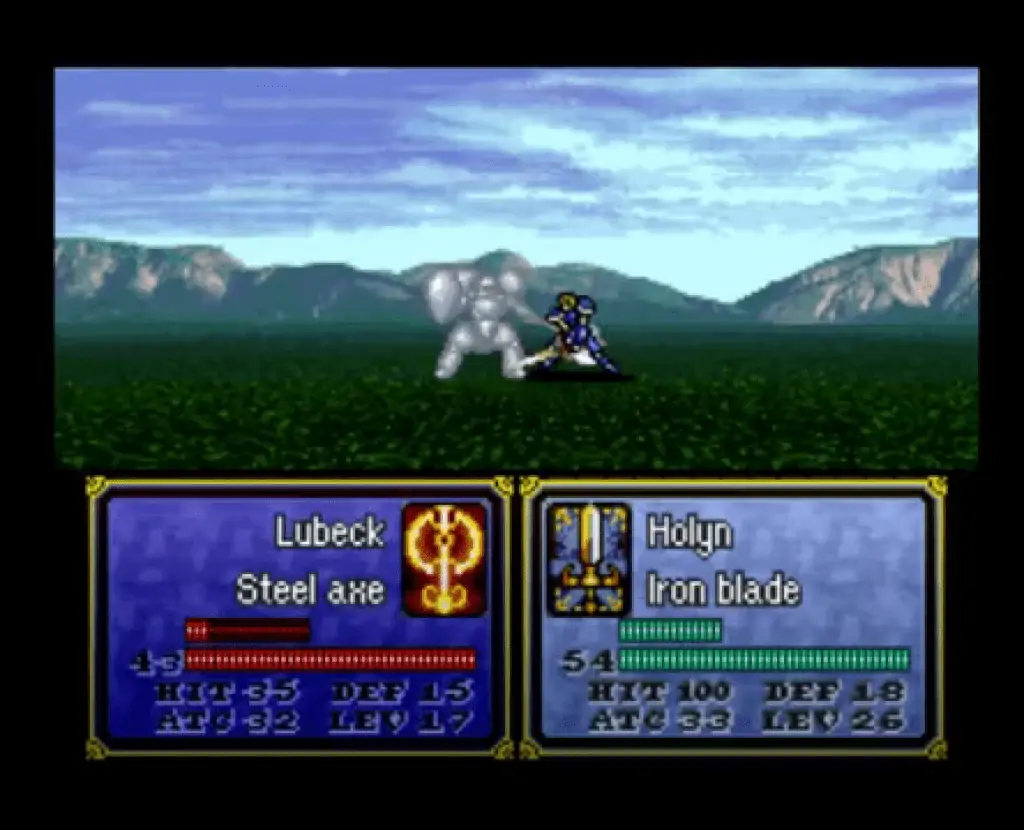
In Genealogy of the Holy War, the Hero class exists, but as the Forrest class. The Forrest serves as a promotion option for Myrmidons instead of Mercenaries in this title. In the follow-up Thracia 776, the Hero class is instead named the Mercenary class and acts as a promotion option for Sword Fighters and Axe Fighters. Thracia 776 gave Heroes access to Axes for the first time in the series.
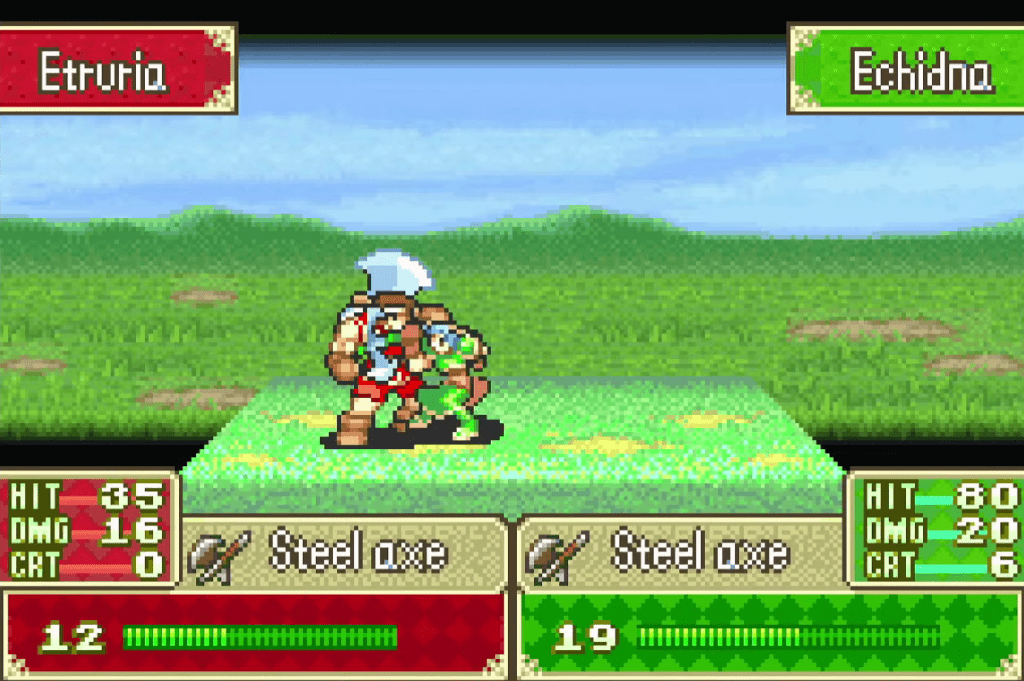
The Binding Blade marks the start of a more modern point in the series, with most classes becoming more consistent in both their names and functionality. The Hero class returns both as the de facto promotion for the Mercenary and with access to Axes. The formula stays the same in The Blazing Blade, and in The Sacred Stones, both Mercenaries and Fighters can promote to Heroes.
In the Tellius Saga, the Hero becomes a unique class for the second time in the series. In Path of Radiance, the only Hero is Greil, the father of Ike. Funnily enough, the Hero class uses Swords and Axes, despite Greil canonically no longer capable of wielding Swords. In Radiant Dawn, Ike follows in his father’s footsteps and is the game’s sole Hero. Unlike his father, he cannot wield access until he promotes into the Vanguard.
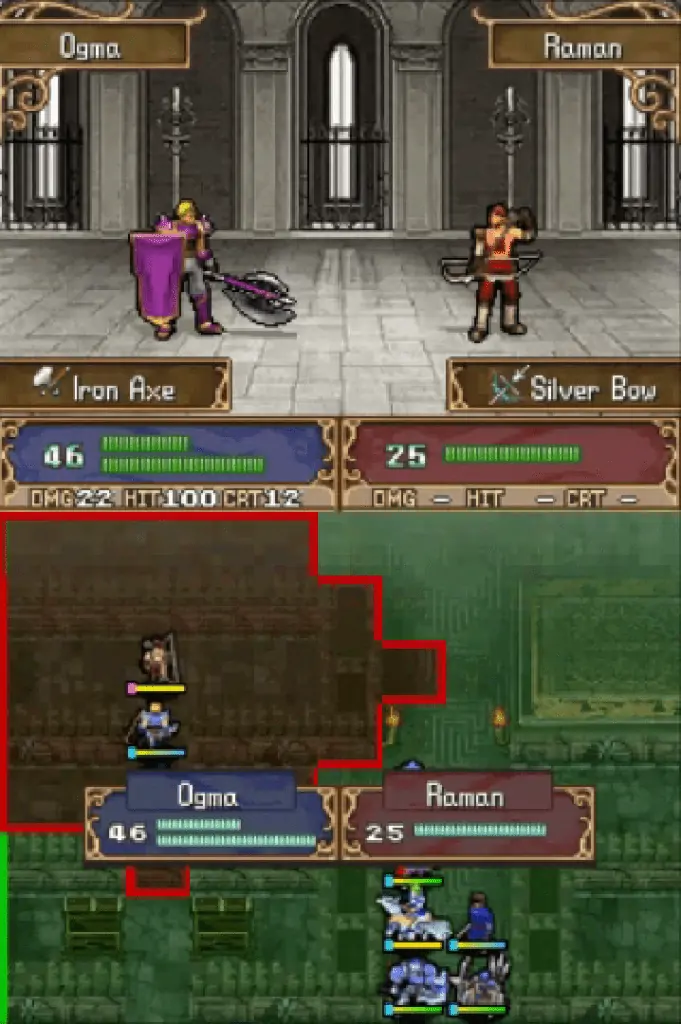
The remakes of the first and third games, Shadow Dragon and New Mystery of the Emblem, give the Hero class their modern-day access to Axes while staying the same everywhere else. Fire Emblem Awakening and Fates makes the Hero class a promotion option for the Fighter class once again while remaining the de facto promotion for Mercenaries.
Three Houses decided to make the Hero one of the game’s numerous male-only classes. Male Commoners or Nobles can become Heroes at level 20 by passing the Certification Exam with a B rank in Swords, a C rank in Axes, and possessing an Advanced Seal.
Skills of the Hero
Heroes are Gifted, not very Skilled (Thumbs up if you get the reference), and don’t have many Skills throughout the series. They prefer letting their raw damage do the talking.
Heroes have had six skills overall (Not including Aether, which is exclusive to pre-Hero Ike and Lords in Path of Radiance).
Shove
All non-mounted units in Path of Radiance and Radiant Dawn have access to the Shove skill, which lets them push a target one adjacent tile away (Provided they are heavier than the target).
Sol
Sol is a class skill of Heroes in Fire Emblem Awakening (Also the first name of some bad guy from the Guilty Gear series), useable once you hit level 5.
Sol allows you to recover HP equal to half the damage dealt when used. With the considerable damage output of the Hero class in general, Sol is a great way to keep them topped up on HP after taking damage in battle.
Axebreaker
A level 15 class skill of Heroes in Fire Emblem Awakening, Axebreaker makes fighting Heroes very unpleasant for enemy Axe-users.
Passively active 100% of the time, Axebreaker boosts your Hero’s Hit Rate and Avoid by 50 whenever facing an enemy wielding an Axe.
Swordfaire
Initially, a class skill reserved for Swordmasters, Heroes gain access to Swordfaire as a class skill in Three Houses.
Swordfaire increases the Might of a Sword by +5 when wielded by a Hero.
Vantage
If “It’s over, Anakin! I have the high ground!” were in Fire Emblem, it would be the Vantage skill.
Yet another skill initially reserved for Swordmasters, Vantage, is a class skill of Heroes in Three Houses. When your Hero’s HP is equal to or less than 50%, they can strike first when an enemy initiates an attack.
Defiant Strength
Defiant Strength is the mastery skill of the Hero class in Three Houses.
When your Hero’s HP is equal to or less than 25%, Defiant Strength boosts their Strength stat by +8.
What Makes A Hero?

If you asked Zack Fair, it would mean acting like Sephiroth. Hercules would tell you it meant passing 12 labors.
But if you asked Intelligent Systems, it means units with access to Swords and Axes that specialize in having high Strength and HP to stay on the frontlines and dish out the pain as much as they can take it.
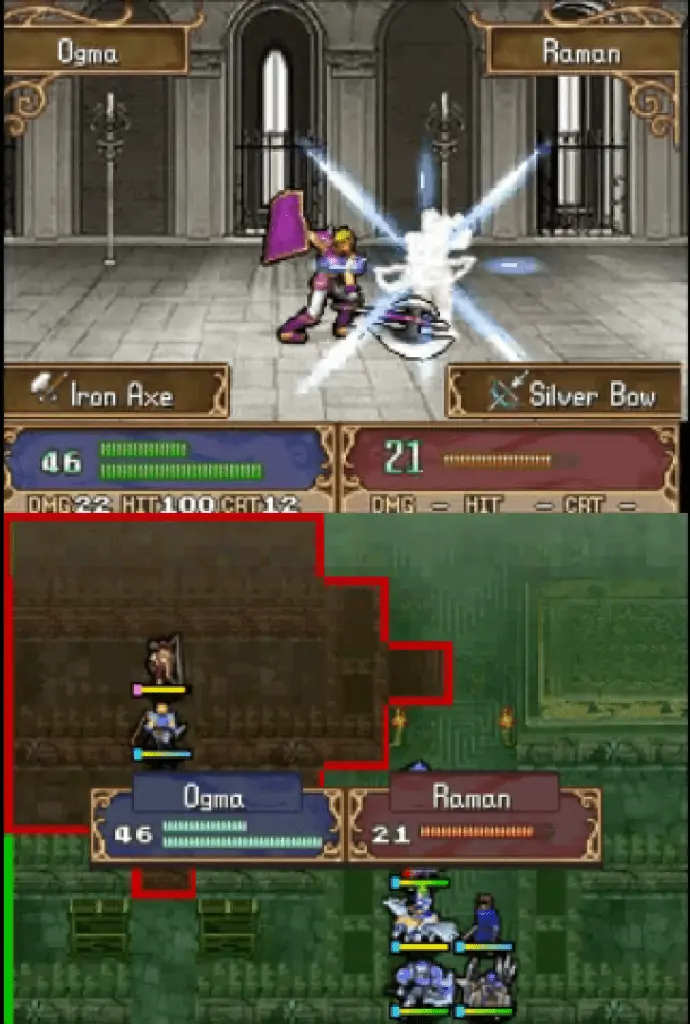
Heroes have above-average Speed and Skill (Though not on the same level as Swordmasters) and will double most enemies. Heroes will be very accurate with Swords and pretty accurate with Axes, despite the latter weapon type’s notorious accuracy issues. The Hero’s greatest asset is arguably their access to Axes, specifically, Hand Axes. Hand Axes have a weapon rank requirement of E or D in most games, allowing the Hero to use them immediately or quickly after spamming Iron Axe use. Hand Axes are fantastic 1-2 range weapons, with their only drawback being poor accuracy. But the Hero’s Strength and superior Skill enable them to use Hand Axes more effectively than classes like Warriors or Berserkers. A Hero with a Hand Axe is a killing machine that you can send into enemy territory and watch as they kill nearly everyone.

With how regularly your Hero will be using Hand Axes, it won’t take long for them to reach at least a C rank in Axes to gain access to Killer Axes. That gives them a powerful Axe to use against all the Lance-users they will come across, of which there are many. That’s not to say that the Sword is useless in a Hero’s hands because that’s far from the case. Most Heroes (Except maybe Echidna) have enough Strength and Constitution to wield the heaviest Swords without losing their ability to double. That’s an advantage that a class like Swordmasters lacks. Raw damage is obviously more reliable than landing critical hits (Unless you’re someone like Rutger with over 100% crit chance), which definitely improves the Hero’s stock value in the class rankings.
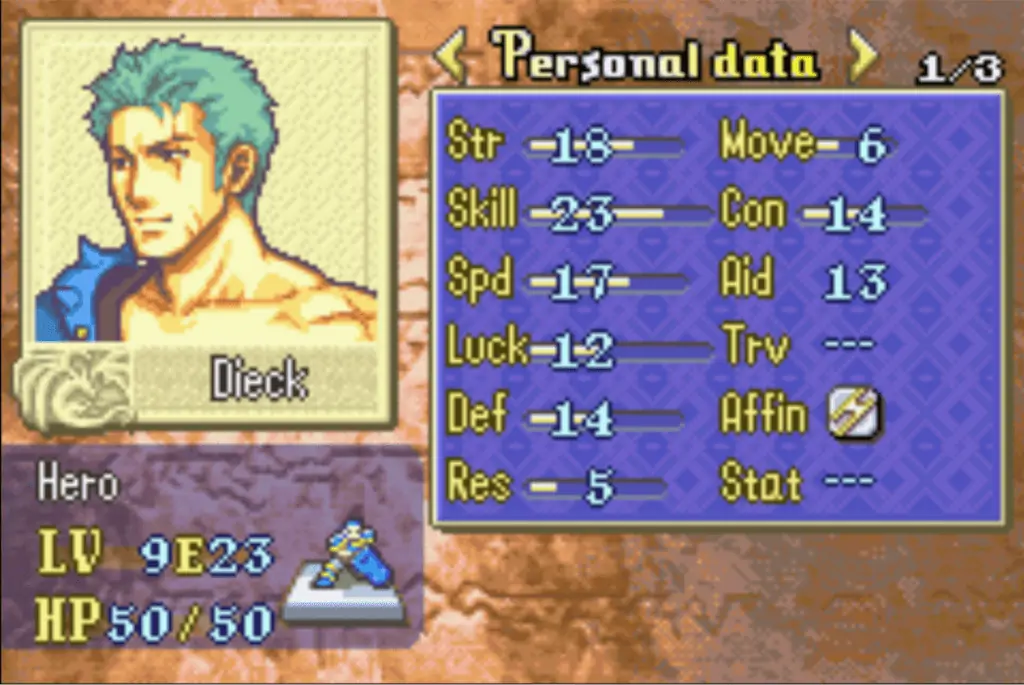
Heroes have good bulk for infantry units, and you can pretty safely have them go off by themselves so long as no magic users are around. They’re more than capable of handling every physical unit in the game. They’re on a timer, however.
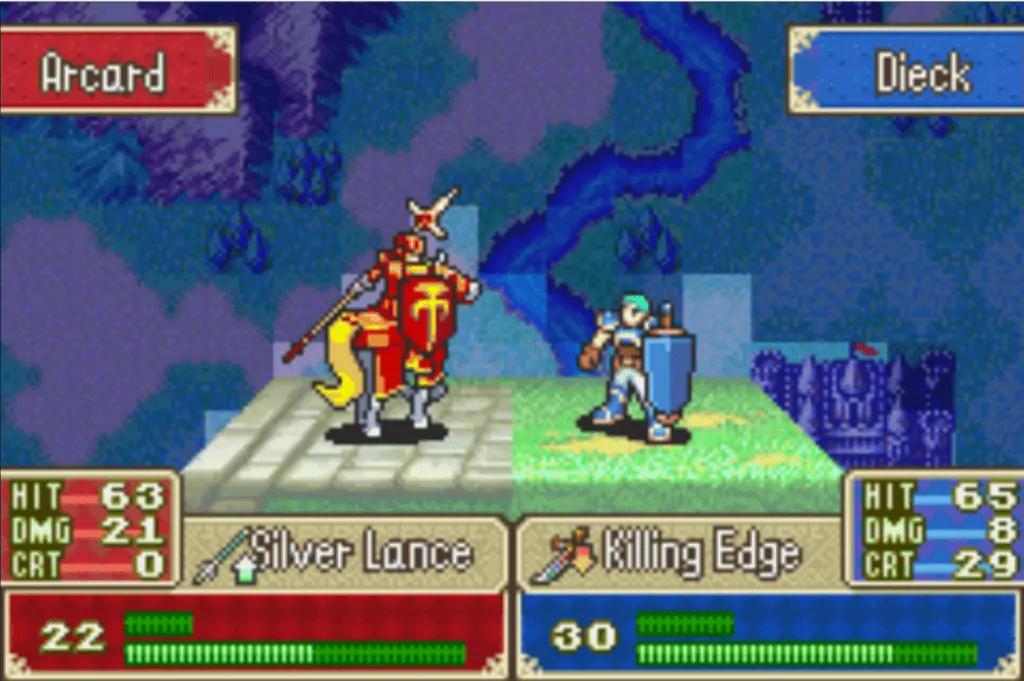
Defensively, they are almost always on a downward slope. In the early-midgame, Defense will be average to above-average and steadily decline as you reach the endgame. Heroes don’t have the best Luck stat, so they aren’t particularly good at avoiding critical hits. Enemy Myrmidons won’t be a huge problem since they lack the Strength to deal significant damage to your Hero, even if they crit. But once you start running into Swordmasters and Berserkers, you’ll need to exercise more caution.

Mages will always be a bad matchup for Heroes. You will be able to one-shot most enemy magic users, but taking on multiple magic users back-to-back is inadvisable. The only possible exceptions are Druids and Shamans since their heavy tomes give them poor accuracy. Heroes have poor Resistance base stats and growth rates, so consider having a Pure Water handy or using a Barrier staff on your Hero.
Heroes suffer from the usual Movement issues of infantry units, so you may need to warp them where they need to go or ferry them with a flying or mounted unit. Heroes have one thing going for them when it comes to Movement; the ability to cross rivers. It will come in handy more than once and cut down the time it takes to get to a fight or get your Hero into a flanking position.
How Many Playable Heroes Exist In Fire Emblem?
So far, there have been 12 playable Heroes in the series.
- Astram (Shadow Dragon & the Blade of Light, Mystery of the Emblem, Shadow Dragon, New Mystery of the Emblem)
- Samson (Shadow Dragon & the Blade of Light, Mystery of the Emblem, Shadow Dragon, New Mystery of the Emblem)
- Echidna (The Blazing Blade)
- Harken (The Blazing Blade)
- Ike (Radiant Dawn, Awakening)
- Flavia (Awakening)
- Priam (Awakening)
- Ogma (Awakening)
- Alm (Awakening)
- Roy (Awakening)
- Linus (Awakening)
- Zhara (Fates)
Is the Hero Class Good?
Yes, though it drops off significantly as you make your way into the endgame.
Heroes are very reliable infantry units. They have enough HP to make up for their average Defense for around 75% of the game and are pretty accurate, even with weapon disadvantage. Their Strength will be significantly higher than most of your other physical units until they start to max out. Various Mercenaries start with high base stats, so if you want, you can promote them into Heroes very early, and they will put in a lot of work for you.
Once your Paladins, Wyvern Lords, and Falcoknights start to snowball, the Hero will be significantly less valuable simply because they can’t keep up. Literally. Paladins and Wyvern Knights will have better Defense, and Paladins will have better Defense and Resistance. The Hero might still have an edge of Strength, but the lack of mobility and inferior defensive capabilities will hold them back.
That doesn’t mean that the Hero has zero use in the endgame. Some maps heavily restrict the Movement of mounted units, giving Heroes the advantage. I routinely use Heroes as walls as they are durable enough to take the hits and do a great job of setting up kills for low-level characters. And I really cannot overstate the value of being able to cross rivers either.
Who Is The Best Hero In Fire Emblem?

My vote has to go to Harken from The Blazing Blade (Especially if playing Hector Hard Mode for the Hard Mode Bonuses).
Besides HP, Harken’s growth rates are pretty standard for a pre-promoted unit, but his base stats make up for it, especially on Hard Mode. His base HP is slightly below-average for a level 8 Hero, but he has excellent Strength, Skill, and his Speed is solid. He probably won’t reliably get much faster due to his 40% Speed growth rate, but enemies in The Blazing Blade are slow, so he shouldn’t have issues doubling anyone.
Harken has base B ranks in Swords and Axes, with his Axe rank standing out. Harken can use Killer and Brave Axes at base, which is something your Raven likely won’t be able to do yet. He’s not far off from using Silver Axes either.
Harken definitely ranks as one of the better late-game pre-promoted units you can use in Fire Emblem and earns his spot as the top Hero in the series.
FAQs
Question: Who is the worst Hero in the series?
Answer: Samson is pretty bad, but I’m going to go with Echidna from The Binding Blade. For starters, enemies can kill her before you get a chance to recruit her. It’s almost impossible on Normal Mode but not implausible on Hard Mode.
Her base Speed and Skill are great, but her Strength is barely above-average for her join time, and everything else is meh. She has pretty terrible growth rates too. Access to Axes is arguably the best aspect of the Hero class, but Echidna’s low Constitution means she suffers significant Speed penalties from heavier Axes.
Question: Is it worth it to field more than one Hero?
Answer: In the early-midgame, I would say yes, but that’s it. If you have a promoted Mercenary as a Hero and a pre-promoted Hero, they will be reliable units for you. It takes a while before the competition for unit spots starts to heat up, but once it does, it’s hard justifying bringing 2 Heroes instead of all the Paladins you have, for example.
Question: Are Heroes the best Axe-users in the series?
Answer: Since Paladins don’t have access to Axes in all their appearances throughout the series, I would say yes. Paladins are darn handy with Lances, so getting a good rank in Axes can take a while. But Heroes can and should immediately start using Axes once they get them, so they achieve high weapon ranks quickly.
Conclusion
Besides your obligatory Jagen unit, Heroes are probably the most overpowered you’ll feel in the early game and give you a taste of what real power is.
I’ve always been very fond of the Hero’s art style, with Shadow Dragon being my favorite iteration, but there is one question I would love for Intelligent Systems to answer: Why do Heroes have shields?
As noted above, Heroes cap out with relatively average Defense. Heroes have zero skills related to their shield at all. Now I’m not one to knock a person’s fashion accessory, but we’re talking about combat. If it doesn’t provide any real value to you in battle, why do you have it?
Overall, I would say that I am satisfied with where the Hero class is at right now. You can’t really expect infantry units to surpass mounted or flying units after all, and you can’t give Heroes sky-high Defense or Resistance either. Heroes are one of the better-balanced classes in the series that didn’t take much fine-tuning to perfect. They have their weaknesses, but plenty of strengths too.
For more interesting readings about Fire Emblem check out:


